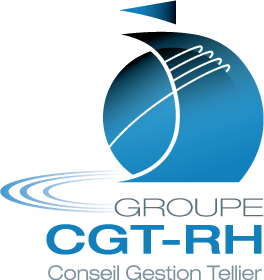Injury reduction and rehabilitation are regular aspects of sports science this aim to protect athletes via harm and facilitate their particular recovery when injuries happen. These disciplines are critical for maintaining the health, performance, and longevity of athletes over all levels of sport. Innovations in sports science have led to more effective strategies for protecting against injuries and improving rehab outcomes, thereby enhancing the entire well-being and career long life of athletes.
Injury protection in sports science encompasses a broad range of strategies made to minimize the risk of injuries. One of the primary methods is through the implementation involving proper training techniques. Schooling athletes and coaches regarding the importance of warm-ups, cool-downs, along with stretching can significantly can help likelihood of injuries. Dynamic warming up increase blood flow to the muscle groups, enhance flexibility, and prepare yourself the body for physical activity. Cool-downs and stretching after physical exercise help to reduce muscle firmness and promote recovery.
Durability and conditioning programs are integral to injury prevention. These programs focus on developing muscle strength, endurance, and flexibility, which are essential for stabilizing important joints and supporting proper movements mechanics. By strengthening muscular tissues and improving overall exercise, athletes can reduce the strain particular bodies during intense physical exercise, thereby decreasing the risk of traumas such as strains, sprains, as well as ligament tears. Customized fitness programs that address the specific needs and demands of every sport are particularly effective with preventing injuries.
Biomechanical study is another crucial component of injury prevention. By analyzing a great athlete’s movement patterns, sports activities scientists can identify probable issues that may lead to injury. Like improper running or leaping techniques can place too much stress on certain important joints and muscles, increasing the chance of injury. Corrective exercises as well as technique adjustments can then be prescribed to address these issues and promote safer, more efficient activity. Video analysis and wearable technology are valuable resources in biomechanical assessments, providing detailed insights into a good athlete’s movements.
Nutrition and hydration also play vital roles in injury prevention. Proper nutrition supports muscle mass health, energy levels, and general physical condition, reducing the risk of fatigue-related injuries. Adequate hydration is really important for maintaining joint moisture, muscle function, and cognitive performance. Dehydration can lead to muscle tissue cramps, decreased coordination, along with impaired judgment, all of which enhance the risk of injury. Educating some athletes about the importance of balanced diet plans and proper hydration practices is a key preventive approach.
Despite the best preventive measures, incidents can still occur, and powerful rehabilitation is crucial for making certain a safe and successful get back to sport. Rehabilitation in sporting activities science involves a a comprehensive approach, combining medical treatment, physical therapy, and psychological support. The primary goals of rehabilitation should be promote healing, restore functionality, and prevent re-injury.
The initial phase of rehabilitation focuses on managing pain and inflammation. Techniques such as rest, ice, contrainte, and elevation (RICE) are typically used to reduce swelling in addition to alleviate pain in the extreme stage of injury. Health interventions, including the use of anti-inflammatory medications and, in some cases, surgical procedures, may be necessary depending on the intensity of the injury.
As the injury begins to heal, the focus shifts to restoring range of motion, durability, and flexibility. Physical therapy this hyperlink plays some sort of central role in this phase, with tailored exercises built to rehabilitate the injured area while preventing compensatory movements which may lead to additional problems. Ongoing resistance training helps rebuild muscle tissue strength, while stretching exercises boost flexibility and joint range of motion. Balance and proprioception exercises are also incorporated to restore typically the body’s ability to sense its position in space, which is essential for coordination and harm prevention.
Advanced rehabilitation approaches, such as neuromuscular training as well as functional movement exercises, make an effort to restore an athlete’s ability to perform sport-specific movements safely and effectively. These exercises simulate the demands of the athlete’s sport activity, helping them regain self-confidence and prepare for a return to help competition. For instance, a forward, attacker striker recovering from a knee injuries might engage in drills that simulate kicking, cutting, in addition to pivoting movements to ensure the kneecap can withstand the worries of the sport.
Psychological help is an often-overlooked but important aspect of sports injury rehab. Injuries can have a significant mental and mental impact on athletes, leading to feelings of disappointment, anxiety, and loss of id. Sports psychologists and psychological health professionals provide valuable assistance during the rehabilitation process, helping athletes cope with the emotional challenges of injury healing period. Techniques such as goal setting, creation, and relaxation strategies can aid in maintaining a positive frame of mind and motivating athletes through their rehabilitation journey.
Damage prevention and rehabilitation are dynamic fields within activities science, continually evolving along with advancements in research and also technology. Emerging technologies for example wearable sensors, virtual fact, and regenerative medicine hold promise for further enhancing personal injury prevention and rehabilitation tactics. Wearable sensors can keep track of an athlete’s biomechanics as well as physiological parameters in live, providing data to optimise training and prevent injuries. Electronic reality can be used for fascinating rehabilitation exercises, making the course of action more engaging and powerful. Regenerative medicine, including stem cell therapy and platelet-rich plasma (PRP) treatments, provides new possibilities for accelerating tissue healing and recovery.
The integration of evidence-based methods and a holistic approach is crucial for effective injury prevention and rehabilitation in sports science. By addressing the actual physical, psychological, and enviromentally friendly factors that contribute to traumas, sports scientists can develop detailed strategies that support the and performance of athletes. Nonstop education, research, and relationship among healthcare professionals, instructors, and athletes are crucial to get advancing the field and ensuring the well-being of those involved in sports.
